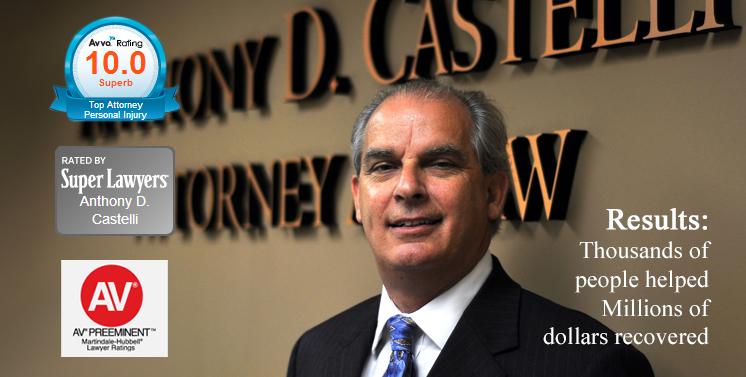Posted: November 11, 2016
In the following video, Anthony Castelli discusses some of the factors that make for a strong personal injury claim.
If you've recently been injured in an accident caused by the negligence of another, you may be wondering whether you're entitled to compensation for your damages. Fortunately, our legal system provides a wide range of rights and protections for personal injury victims. However, you must be able to prove negligence and demonstrate that you suffered damages in order to have a strong personal injury case.
The best way to determine whether you have a strong case is to speak with Mr. Castelli in person. He has been fighting for the rights of personal injury victims in the Cincinnati area for over 30 years, and he will stand by your side every step of the way to help you recover the compensation you deserve.
Please contact the Law Office of Anthony Castelli by calling (513) 621-2345 today to schedule your free personal injury consultation. We serve clients in Cincinnati, West Chester and Mason, Ohio.
AUDIO TRANSCRIPTION: What Makes a Strong Personal Injury Case
As a personal injury attorney, who is constantly contacted by people who may have been in an accident last week, last month, last year. Some people have very significant injuries.
Some people may have more of a soft tissue type injury. How do you make a determination as to the cases that you accept? Do you have sort of a formula? Obviously, you want people to be happy with your services. How do you make that determination if this is a case that you are really going to be able to help that person?
Jonathan, that’s a great question and it’s a hard question. In some cases, the first issue is, is there liability? You can talk to the person and you can get a pretty good feel for, was the other person at fault? Just because the other person was cited by the police doesn’t necessarily mean that the other person was at fault. You can hear the facts, get the police report, preliminarily. Or just even over the phone. Make a pretty good determination that there’s responsibility.
Sometimes there may be partial responsibility but clearly you can pretty well decide. You get a rear end collision, a left of center, T-bone intersection, failure to yield the right of way, so you want to know what the liability is.
You want to know was there, to me, was there significant car damage? We all know, Jonathan, all these seminars that we’ve seen, low impact soft tissue cases, where there is no car damage and you can spend a heck of a lot of money getting experts and people can get hurt. The cars are built so good now that they take the bulk of the hit. But it is really, really hard to convince a jury when you look at a car and see no car damage, at least on one of the cars, because the car can under ride.
So I usually am looking for some type of significant damage. You know, if the bumper, cover underneath the bumper has been bent, something like that.
Then of course, how fast have they gone to the doctor? Did they start going the day of? That’s the ideal situation. If they have a broken something and have a severe injury, they are in the hospital. Those are the kind of cases I take and I can add value.
The ones that are a close call are maybe somebody is trying to handle the case themselves for a little while and it’s been about four months out. The insurance companies kind of started to jerk them around and they’re getting the picture, and they come in, and they’ve really only seen the doctor a couple of times.
Maybe they did go to the emergency room. That may or may not be a case that I can take unless I can, with my intuition and judgment, figure where is this going to lead. Is this just a strain or a sprain that’s going to heal up or are they having radiating pain down an extremity?
It could be a disc injury. Then that can be very severe and serious. I may go ahead and take that case and follow it. And maybe they get better in six weeks. But I think they need somebody in there to help guide them.


